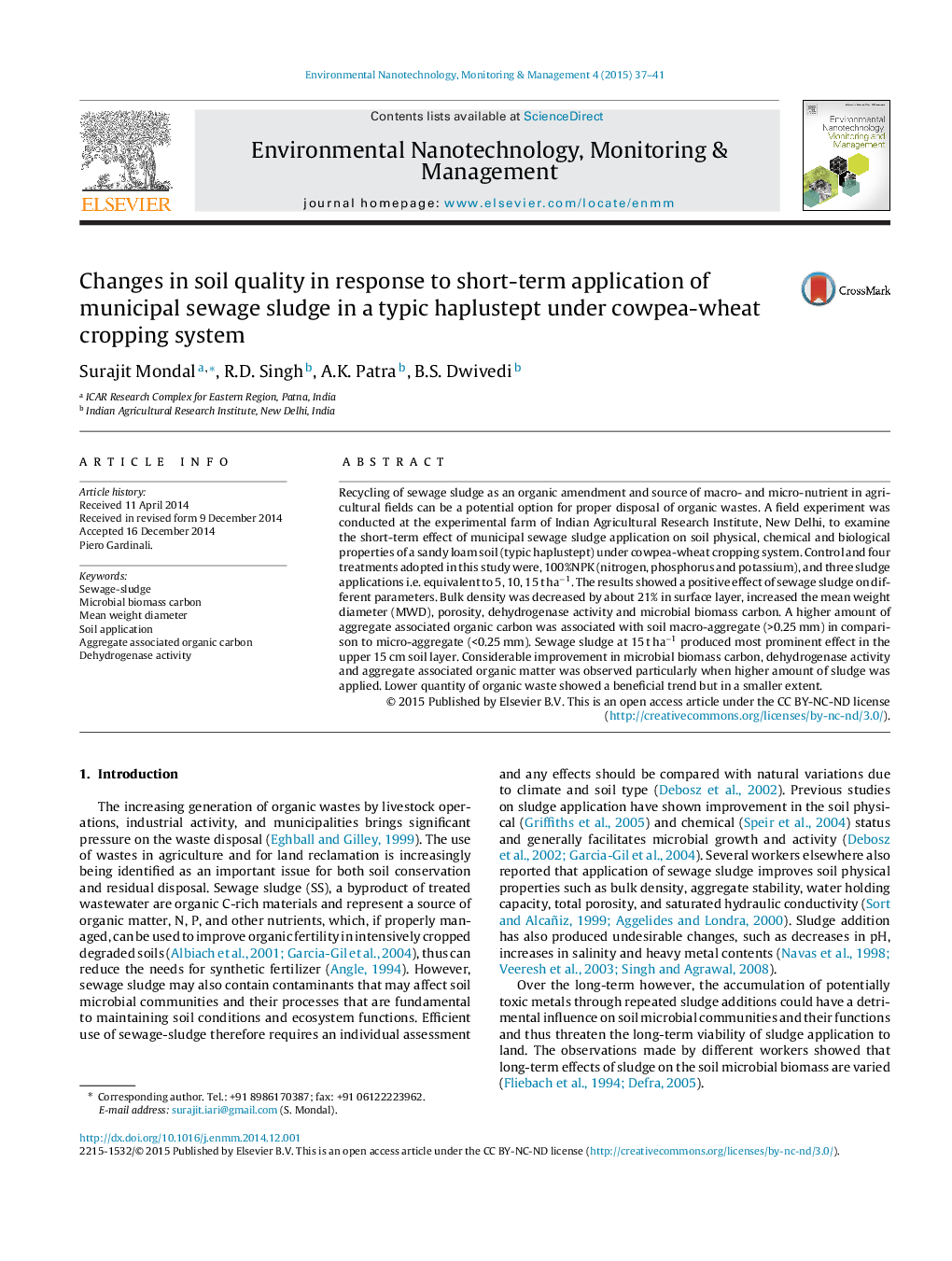| Article ID | Journal | Published Year | Pages | File Type |
|---|---|---|---|---|
| 4424204 | Environmental Nanotechnology, Monitoring & Management | 2015 | 5 Pages |
•A field experiment was conducted to examine the short-term effect of municipal sewage sludge application on soil physical, chemical and biological properties of a sandy loam soil (typic haplustept) under cowpea-wheat cropping system.•Control and four treatments adopted in this study were, 100%NPK (nitrogen, phosphorus and potassium), and three sludge applications i.e. equivalent to 5, 10, 15 t ha−1.•The results showed a positive effect of sewage sludge on different parameters. Bulk density was decreased by about 21% in surface layer, increased the mean weight diameter (MWD), porosity, dehydrogenase activity and microbial biomass carbon.•A higher amount of aggregate associated organic carbon was associated with soil macro-aggregate (>0.25 mm) in comparison to micro-aggregate (<0.25 mm).•Sewage sludge at15 t ha−1 produced most prominent effect in the upper 15 cm soil layer.
Recycling of sewage sludge as an organic amendment and source of macro- and micro-nutrient in agricultural fields can be a potential option for proper disposal of organic wastes. A field experiment was conducted at the experimental farm of Indian Agricultural Research Institute, New Delhi, to examine the short-term effect of municipal sewage sludge application on soil physical, chemical and biological properties of a sandy loam soil (typic haplustept) under cowpea-wheat cropping system. Control and four treatments adopted in this study were, 100%NPK (nitrogen, phosphorus and potassium), and three sludge applications i.e. equivalent to 5, 10, 15 t ha−1. The results showed a positive effect of sewage sludge on different parameters. Bulk density was decreased by about 21% in surface layer, increased the mean weight diameter (MWD), porosity, dehydrogenase activity and microbial biomass carbon. A higher amount of aggregate associated organic carbon was associated with soil macro-aggregate (>0.25 mm) in comparison to micro-aggregate (<0.25 mm). Sewage sludge at 15 t ha−1 produced most prominent effect in the upper 15 cm soil layer. Considerable improvement in microbial biomass carbon, dehydrogenase activity and aggregate associated organic matter was observed particularly when higher amount of sludge was applied. Lower quantity of organic waste showed a beneficial trend but in a smaller extent.
